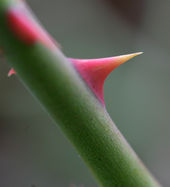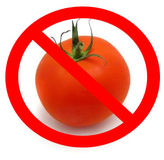1) WGA may be Pro-inflammatory(The above 9 problems are explained in much greater detail here.)
2) WGA may be Immunotoxic
3) WGA may be Neurotoxic
4) WGA may be Cytotoxic
5) WGA may interfere with Gene Expression
6) WGA may disrupt Endocrine Function
7) WGA may be Cardiotoxic
8) WGA may adversely effect Gastrointestinal Function
9) WAGpathogenic similarities with certain Viruses
A major revelation in addition to wheat lectin's intrinsically harmful properties is that it does not require immune-mediation to exert its adverse effects. Unlike classically defined wheat/gluten allergies, intolerances and celiac disease, which require positive findings on blood, intestinal biopsy and genetic tests, wheat lectin operates beneath this level of surveillance on a more primary, subclinical level.
This "invisibility" is why wheat lectin is often difficult to identify as a major contributing cause of morbidity in those who consume it. While it is not the sole or primary cause of a wide range of disorders, it is a major factor in sustaining or reinforcing injuries or diseases once they are already initiated or established. This is due to the fact that wheat lectin (WGA) binds to and interacts with a basic component found within all neural, connective and epithelial tissue, namely, n-acetyl-glucosamine. Once WGA makes it through a compromised mucosa and/or digestive lining, for instance, it can exert systemic effects which are largely subclinical or simply overlooked vis-a-vis the often myopic conventional medical diagnostic gaze.
So why do plants like wheat produce lectins?
"Nature engineers, within all species, a set of defenses against predation, though not all are as obvious as the thorns on a rose or the horns on a rhinoceros. Plants do not have the cell-mediated immunity of higher life forms, like ants, nor do they have the antibody driven, secondary immune systems of vertebrates with jaws. They must rely on a much simpler, innate immunity. It is for this reason that seeds of the grass family, e.g. rice, wheat, spelt, rye, have exceptionally high levels of defensive glycoproteins known as lectins....[Source: Opening Pandora's Bread Box: The Critical Role of Wheat Lectin in Human Disease, by Sayer Ji]
"WGA is Nature's ingenious solution for protecting the wheat plant from the entire gamut of its natural enemies. Fungi have cell walls composed of a polymer of N-Acetylglucosamine. The cellular walls of bacteria are made from a layered structure called the peptidoglycan, a biopolymer of N-Acetylglucosamine. N-acetylglucosamine is the basic unit of the biopolymer chitin, which forms the outer coverings of insects and crustaceans (shrimp, crab, etc.). All animals, including worms, fish, birds and humans, use N-Acetyglucosamine as a foundational substance for building the various tissues in their bodies, including the bones. The production of cartilage, tendons, and joints depend on the structural integrity of N-Acetylglucosamine. The mucous known as the glycocalyx, or literally, "sugar coat" is secreted in humans by the epithelial cells which line all the mucous membranes, from nasal cavities to the top to the bottom of the alimentary tube, as well as the protective and slippery lining of our blood vessels. The glycocalyx is composed largely of N-Acetylglucosamine and N-Acetylneuraminic acid (also known as sialic acid), with carbohydrate end of N-Acetylneuraminic acid of this protective glycoprotein forming the terminal sugar that is exposed to the contents of both the gut and the arterial lumen (opening). WGA's unique binding specificity to these exact two glycoproteins is not accidental. Nature has designed WGA perfectly to attach to, disrupt, and gain entry through these mucosal surfaces."
The Omnipresence of Chitin-Binding Lectin in the Western Diet
While eliminating wheat from the diet is an excellent and necessary step for improving health, it may not be alone sufficient, especially in those with serious health challenges. There are other lectins in the Western diet that have properties similar to wheat lectin (WGA), namely, "chitin-binding lectins." Remember, "chitins" are long polymers of n-acetyl-glucosamine, the primary binding target of wheat lectin. Wheat lectin and "chitin-binding lectin" therefore are functionally identical. These chitin-binding lectin containing foods are:
1) Potato (view abstract)Yes, you are seeing correctly: "gluten free" potato and rice, which are two of the most commonly used ingredients in "gluten and wheat free" products, are on this list. These foods contain a lectin structurally and functionally similar to wheat lectin. While the "nightshade" connection with inflammation has a well-established history, even if the scientific explanation for the connection has been somewhat lacking (perhaps until now), the fact that RICE is on this list amounts to a dietary bombshell. This may also explain why the grain-free diet often produces such superior over simply the wheat or gluten-grain restricted diet and why in some cases eliminating rice may be necessary for full recovery from diet-induced or diet-related ailments.
2) Tomato (view abstract)
3) Barley (view abstract)
4) Rye (view abstract)
5) Rice (view abstract)
Why These Lectins Explain Our Dependence on NSAIDs and Glucosamine
Because many tissues within humans are comprised of n-acetyl-glucosame (a chitin-like substance) the consumption of seemingly innocuous foods such as listed above could result in a wide range of adverse effects (see list above on WGA's 9 potentially toxic effects). The fact that so many Americans consume at least two or three of the above foods (plus wheat) daily explains, for one, why degenerative joint disease (i.e. osteoarthritis) is the rule, not the exception in Western societies, especially in our aging populations. This should explain the connection further:
One way to gauge just how pervasive the adverse effects of these foods are among Western populations is the popularity of the dietary supplement glucosamine. In the USA, a quarter billion dollars' worth of glucosamine is sold annually.The main source of glucosamine on the market is from the N-Acetylglucosamine rich chitin exoskelotons of crustaceans, like shrimp and crab. Glucosamine is used for reducing pain and inflammation. We do not have a dietary deficiency of the pulverized shells of dead sea critters, just as our use of NSAIDs is not caused by a deficiency of these synthetic chemicals in our diet. When we consume glucosamine supplements, the chitin-binding lectins in our foods, instead of binding to our tissues, bind to the pulverized chitin in the glucosamine supplements, sparing us from their full impact. Many millions of Americans who have greatly reduced their pain and suffering by ingesting glucosamine and NSAIDs may be better served by removing chitin-binding lectin containing foods (the underlying cause of their malaise) from their diets. This would result in even greater relief from pain and inflammation along with far less dependency on palliative supplements and medicines alike.
The connection between these chitin-binding lectins and NSAID/Glucosamine dependency has now been explained, but this is only the tip of the "lectin" iceberg. I believe that an in depth investigation into wheat lectin/chitin-binding lectin will reveal that these "invisible thorns" are a rather dominant contributing factor to morbidity and mortality in Westernized socieities.
For Further Reading:
Part 1: The Dark Side of Wheat: New Perspectives on Celiac Disease & Wheat Intolerance
Part 2: Opening Pandora's Bread Box: The Critical Role of Wheat Lectin in Human Disease.
GreenMedInfo.com Toxicology Database: 119 Disease Linked to Wheat Consumption
Wheat and Gluten Education Center on Facebook






Great article! So does the same apply to wild rice?